 Fangs for your service. 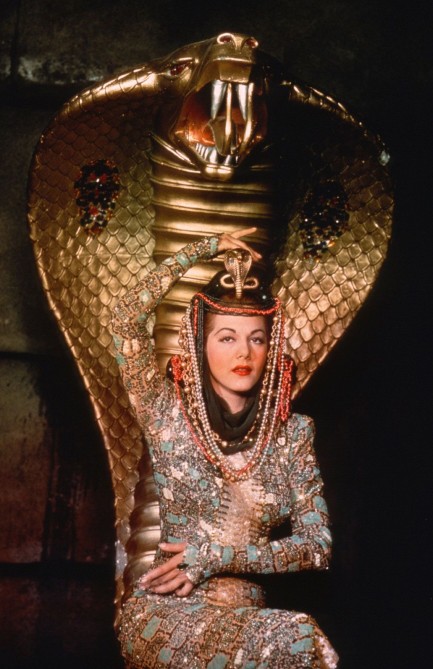
This promo image of Dominican actress Maria Montez in costume for her starring role in 1944's The Cobra Woman sells the movie for us. We'll definitely watch it—and hope it's better than the similarly named 1972 b-horror flick Night of the Cobra Woman. For that matter, we hope it's better than 1955's Cult of the Cobra. Our fingers are crossed. Montez was one of the top actresses in exotic escapist films, appearing in such fare as Ali Baba and the Forty Thieves, South of Tahiti, Moonlight in Hawaii, Sudan, Tangier, White Savage, Pirates of Monterrey, The Thief of Venice... you get the idea. She was still at the top of her globetrotting game when she was found dead in her bathtub in 1951 at age thirty-nine, but her legacy as a film star is assured—even if her movies were shot on Hollywood sound stages, she helped audiences travel the world.
 Any port in a storm—except maybe this one. 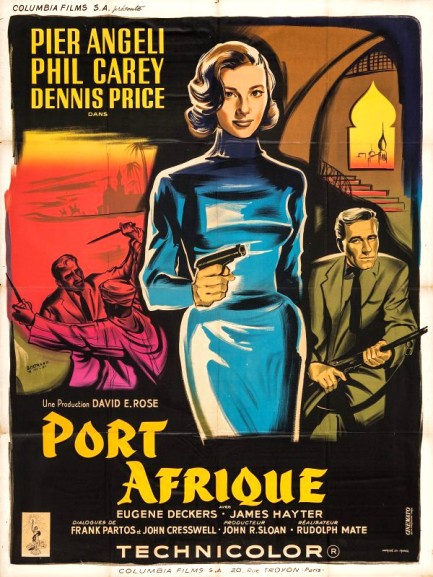
This French poster for the British made film Port Afrique was painted in a style that made us certain it was the work of Constantin Belinsky. But nope—it's signed by André Bertrand, and it's a very nice piece. As the art indicates, the movie is a North African adventure, a vehicle for Italian rising star Pier Angeli, and it can be described with one word—exotic. The filmmakers turned the E dial up to 11, location shooting in Tangier to create a fictional city of Port Afrique that's part Berber, part French, and part Spanish. Casablanca comparisons are inevitable, but solely in terms of exteriors Port Afrique is greatly superior. There's simply nothing like the real thing. The movie is also shot in color, which adds to its appeal, even if it detracts a bit from its noirish ambitions.
As in Casablanca, much of the action in Port Afrique revolves around a bar, in this case Le Badinage, which seemingly can afford to have more performers than customers. The bar's beautiful chanteuse—there's always a beautiful chanteuse—is played by the elfish Angeli, who's stuck in town without a passport and suffering under the attentions of the proprietor Nino. The threat in his overtures is unspoken but clear—no punani, no passport. Into this situation arrives a wounded American pilot with the unlikely name Rip Reardon, played by future b-movie stalwart Phil Carey. After his onscreen run he would find himself in soap opera purgatory as Asa Buchanan on One Life To Live, but here he gets his chance to help anchor a big drama. Shortly after Rip arrives his wife turns up dead. The cops call it a suicide, but Rip decides to take the investigation into his own hands, with all the usual twists and turns.
Port Afrique has a lot of problems. The script is clunky and improbable, the motivations of its characters murky, and the chemistry between its stars lukewarm. Carey ended up on soap operas for a reason, clearly on display here. He has little range, and none of the heft needed for his role. As for Angeli, she never became the superstar her advocates intended, and again, you can see why. She's better than Carey for sure, yet she still lacks the fire her role needs. But here's the thing—we think, for serious film buffs, the movie is worth watching anyway. It looks amazing, from the cinematography to the production design, and its goal of being a Technicolor noir is worth examination and discussion. But casual film fans may want to steer clear. After premiering in the U.S. in 1956 Port Afrique reached France today in 1957.
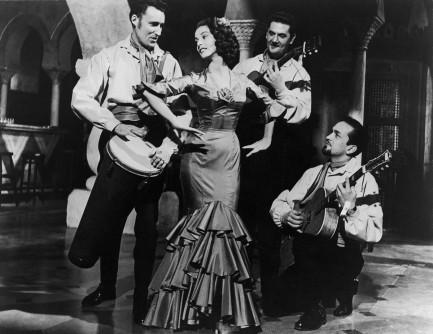 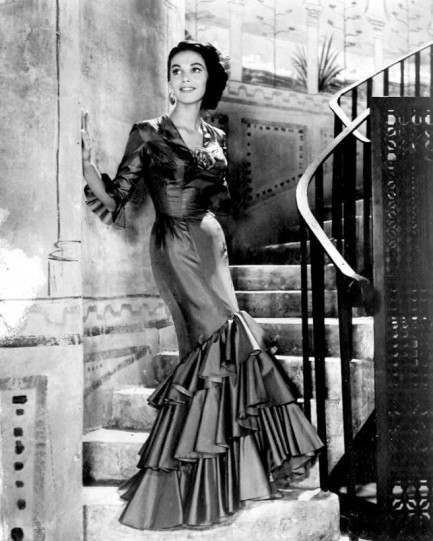 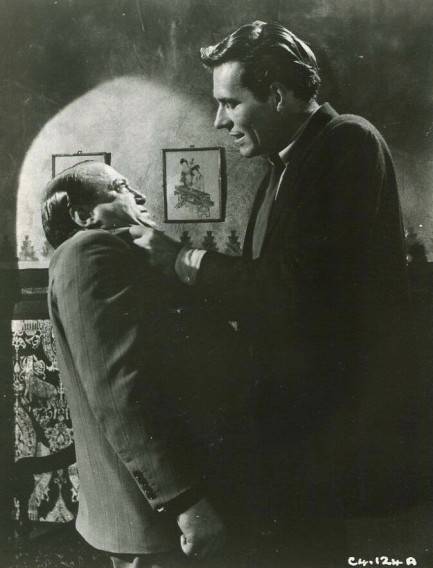 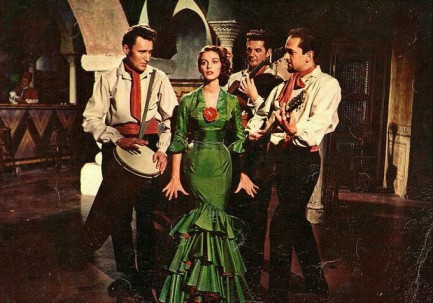 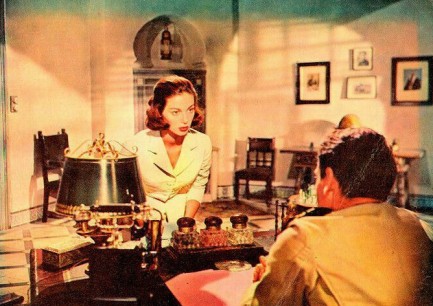 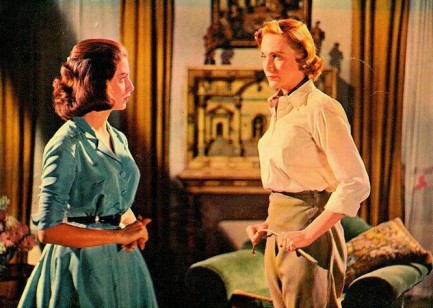 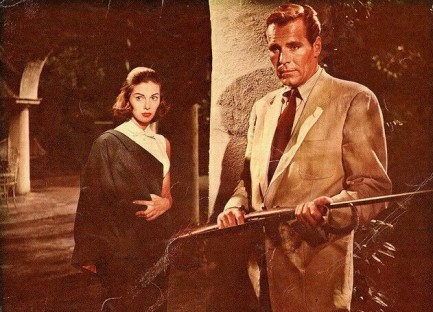 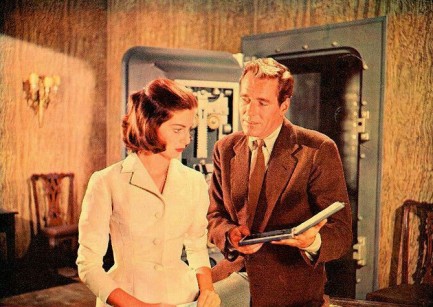  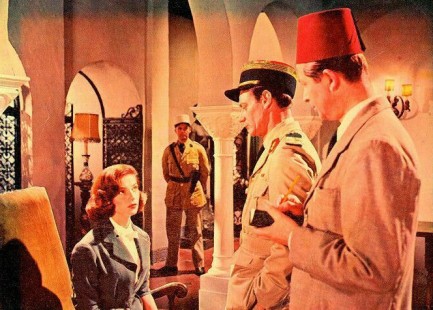 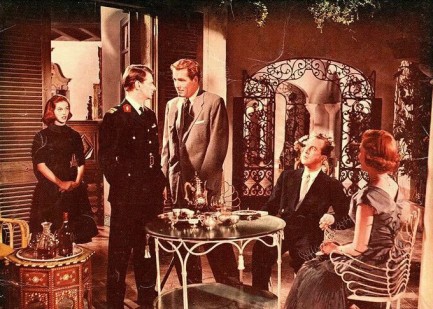 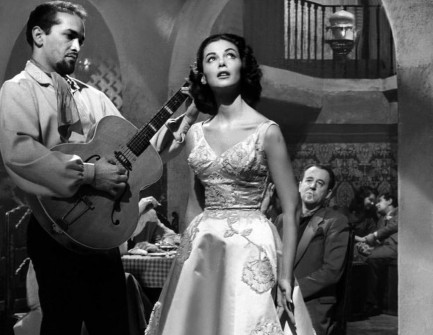 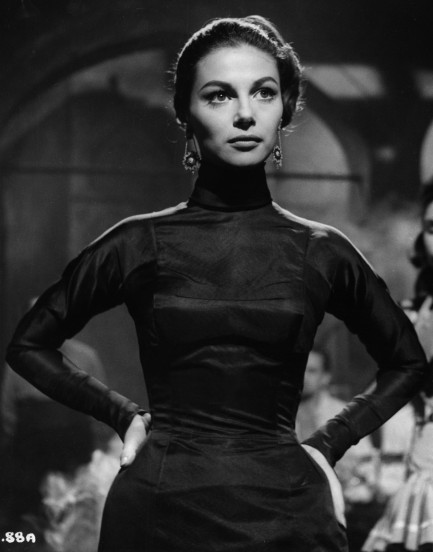
 From moment to moment everything can change. 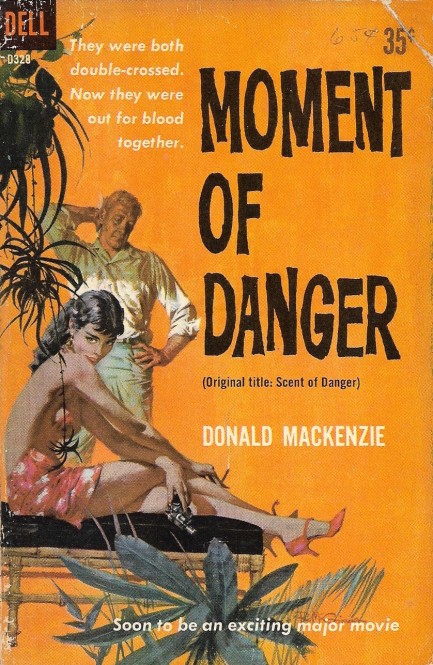
Donald MacKenzie's Moment of Danger, also known as Scent of Danger, appeared in 1959 as a Dell paperback with a front painted by the busy Robert McGinnis, always the man to employ for elevated cover art. In this case, his pistol packing, sarong clad femme fatale lounging behind a spider plant stands as a top effort. And by the way, we only know what a spider plant is because we have six large ones busily propagating around palatial Pulp Intl. HQ.
The tale follows a double-crossed jewel thief named Macbeth Bain (you gotta love that) who vows revenge on the partner who ditched him after a big heist and put the cops onto him. The double-cross is only half successful. The partner gets away with the loot, but through a stroke of luck, the evidence that was supposed to put Bain behind bars never materializes. Now he's free, furious, and tracking his missing partner from London to Gibraltar, Tangier, and Malaga, seeking to even the score. Along for the adventure is the partner's wife, also intent upon revenge after being ditched for another woman.
This is a densely written tale, heavy on narrative and light on dialogue, told from Bain's point of view as he struggles with fear of his uber-competent partner, and attraction toward his beautiful sidekick. He's a curious character, hard to like at first because his emotions range from anger at his betrayal to resentment that a woman is tugging at his heart, but you eventually root for him. The book ends almost anti-climactically, mid-scene at a crucial moment, but it remains a decent whirlwind thriller that passes through several exotic cities, and is worth the reading time, imperfections and all.
Hollywood agreed. The big brains out in Tinseltown liked Moment of Danger enough to option it and make it into a 1960 movie titled Malaga, starring Trevor Howard and Dorothy Dandridge. We'll definitely watch it because it's a noteworthy film, representing a rare leading role for an African American actress, and in fact was Dandridge's last movie. Our film watching résumé is a bit thin on the Dandridge front anyway, so we now have a good reason to address that. We'll of course report back.
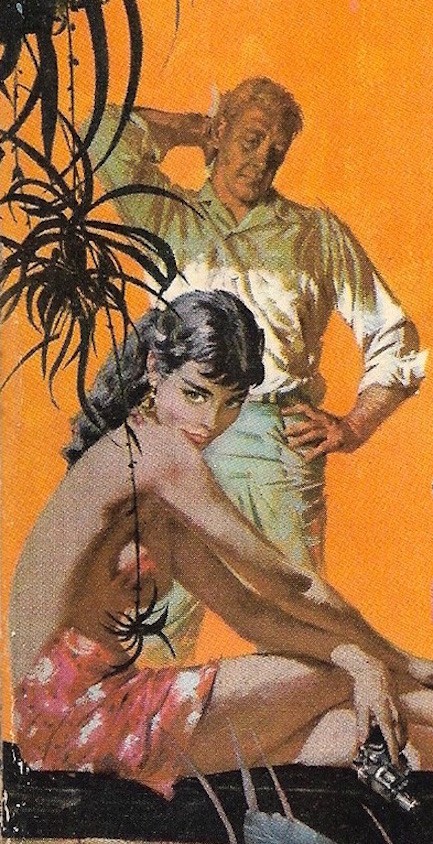 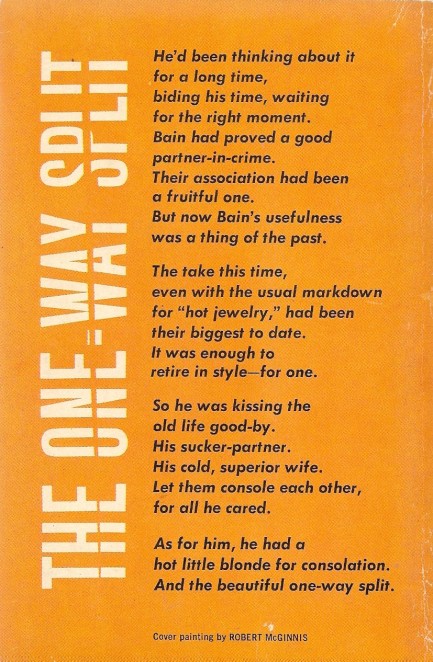
 I know these regional airports lack the usual amenities, but a shuttle to the terminal sure would be nice. 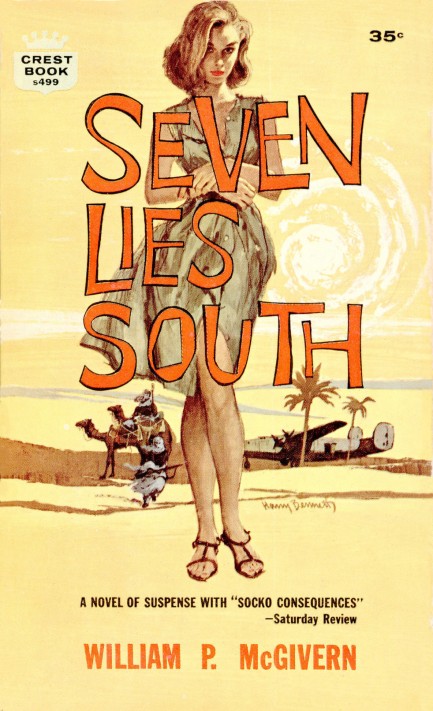
We've mentioned before that we like to read books about places we've been, but we had no idea the 1960 thriller Seven Lies South was set in Spain and Morocco. We impulse-bought this 1962 Crest edition after seeing William P. McGivern's name and taking in the striking Harry Bennett cover art featuring a woman, an aircraft, two bedouins, and their camels. McGivern wrote the excellent 1961 juvenile delinquent thriller Savage Streets, so that was all we needed to know. We found out in the first page that the setting, as the story opened, was Malaga, Spain, and went, “Oh, okay—even better.”
The book stars Mike Beecher, a former bomber pilot, now in his late thirties and doing a belated Lost Generation bit—idleness, parties, a rotating cast of acquaintances, and a lot of solitary reflection in a foreign land. His Sun Also Rises-style fatalism is a little tedious, in our view. After all, he was never wounded in the sex organs like Jake Barnes, and if one's naughty bits function, there's always reason to smile. In any case, one day he meets a beautiful young woman named Laura Meadows, who embodies his dissatisfaction:
She symbolized everything that was unobtainable, beyond his reach; the rosy and prosperous life of America, with the tides of success sweeping everyone on to fine, fat futures.
But not everyone, of course. Entire ethnicities were excluded from that sweeping tide of success. Things are unobtainable for Beecher, but only because he's made a choice to reject them. What a luxury, to reject something, then bemoan what one “can't” have, when many people really can't have it. It's not a flaw in the book, so much as a cultural blind spot—perhaps deliberately inserted by McGivern, who was generally insightful about such issues. You have to sort of smile at Beecher's inability to appreciate being reasonably young, healthy, and knocking around the south of Spain drinking wine. Not everyone gets to do that. That's exactly what we do, and we appreciate it every day.
Beecher is coerced into helping to steal a plane headed for Morocco, but the mission goes wildly sideways, which unexpectedly mutates the narrative into a desert survival adventure. In order to set up and progress through this section, McGivern has his characters sometimes undertake actions that don't exactly resound with logic, but even so the book is good. McGivern can really write, even when it verges on the preposterous. He was more at home in the suburbs of Savage Streets, but he navigates the Spain and Morocco of Seven Lies South deftly enough. We have no hesitation about trying him again.
 Huh? What do you mean you tipped him enough earlier to cover our whole stay? 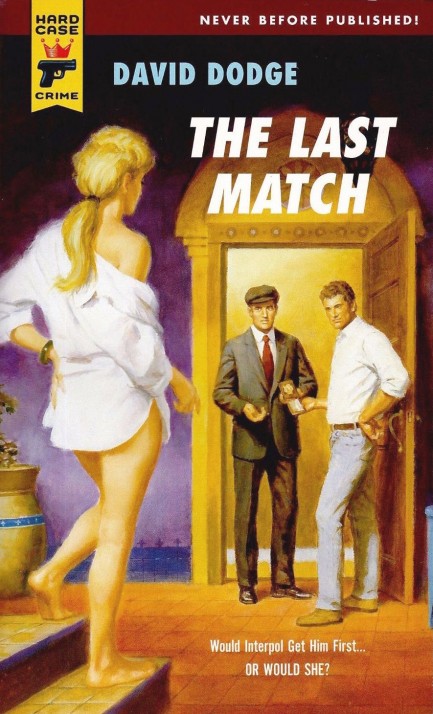 
David Dodge was a very deft writer. When he died in 1974 The Last Match hadn't been published, but Hard Case Crime put it out in 2006, and it falls into the same category as his To Catch a Thief, as well as jet-set grifter novels by other authors. For us this book was tremendously entertaining. Dodge takes his protagonist to Spain, southern France, Tangier, Central America, Brazil, and other exotic locales, weaving in foreign vocabulary and mixing it all up to reflect his character's life as an international rolling stone. Like when he explains offhand that the Brazilian soft drink guaraná is fizzy like a Portuguese vinho verde, but sweet, and perfect for mixing with cachaça. Little things like that give the tale great flavor. And the story of an inveterate con man knocking about from country to country while stalked by a smitten aristocratic beauty (who he refers to as Nemesis) has plenty of amusements. Some say it's not Dodge at his best because it has no plot, but stories only need to entertain. Dodge, like his main character, is remembering the highlights of his life and mixing in a portion of male-oriented fantasy. We'll admit to having a weakness for the tale because we've been to most of the places mentioned, had high times drinking guaraná mixed with cachaça, and met more than one charming hustler or beauty who arrived from parts unknown to send the town reeling. But as objectively as we can manage to assess, we think The Last Match is good, lighthearted fun. Highly recommended.
 MI5 files reveal another compromising John Profumo affair. 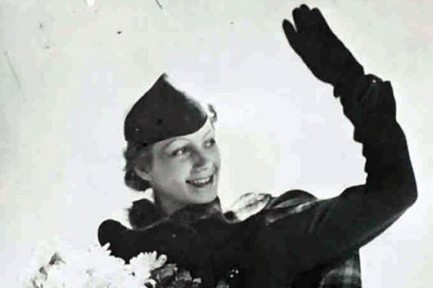
An interesting report came out of Great Britain earlier today about John Profumo, the disgraced Secretary of State for War who resigned in 1963 after it emerged that he was having an affair with Christine Keeler, who also had sexual ties to a Russian intelligence officer. When authorities learned of the potential security threat, Profumo was interrogated, at which point he denied involvement with Keeler. When his denial was found to be false, he resigned amid the spiraling scandal.
Now MI5 files have revealed that Profumo had a previous affair with a Nazi spy who may have tried to blackmail him. The woman was named Gisela Klein, and she and Profumo met at Oxford University in 1936 when he was an undergrad. During World War II she began working for Nazi intelligence, and after the war was imprisoned as a spy. However the American in charge of her jail got her released 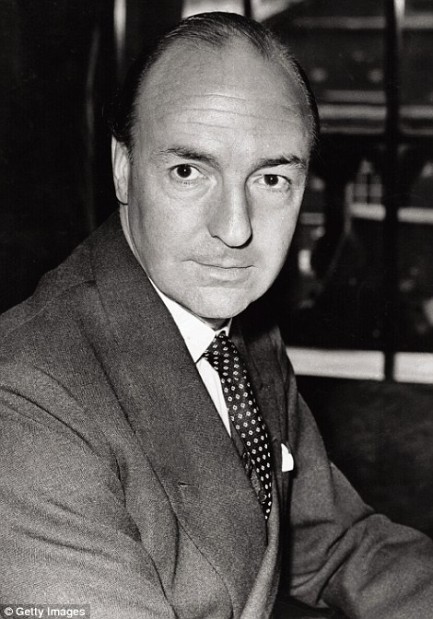 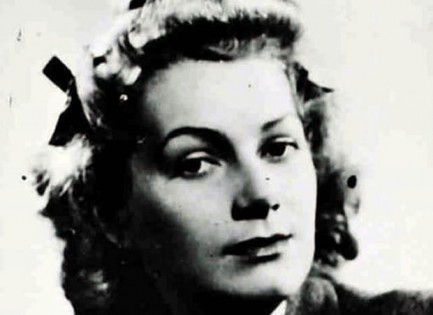 and married her. As Gisela Winegard she maintained contact with Profumo after he entered politics, and he allegedly wrote letters to her on House of Commons stationery. and married her. As Gisela Winegard she maintained contact with Profumo after he entered politics, and he allegedly wrote letters to her on House of Commons stationery.
There's no evidence Profumo knew about his old flame's Nazi connections, but he may have learned of her blackmail schemes by becoming a target. In 1951 Winegard was living in Tangier with her husband when she applied for a visa to visit Britain and listed “Jack Profumo MP” as a reference. Observers are speculating whether Profumo may have been under pressure to help push her application through. But the visa was eventually refused because of Winegard's Nazi past, with the head of British intelligence in Tangier also noting: “We have good reason to believe Mr. and Mrs. Winegard have recently engaged in blackmailing activities and now think it is possible their intended visit to the UK may be connected with this affair.”
Since we've mentioned the Profumo Affair several times, we found this to be an interesting footnote, especially in light of the ongoing U.S. Justice Department investigation into White House connections to Russian operatives. It's curious that Profumo's affairs would twice send him orbiting so close to spies of adversarial countries, but it doesn't seem as if the Klein/Winegard connection will produce any real smoking gun in terms of improper favors. As for Trump and Russia, that remains to be seen. You can read some previous posts on the infamous Profumo Affair here, here, and here.
 North Africa provides the setting for another Hollywood overseas adventure. 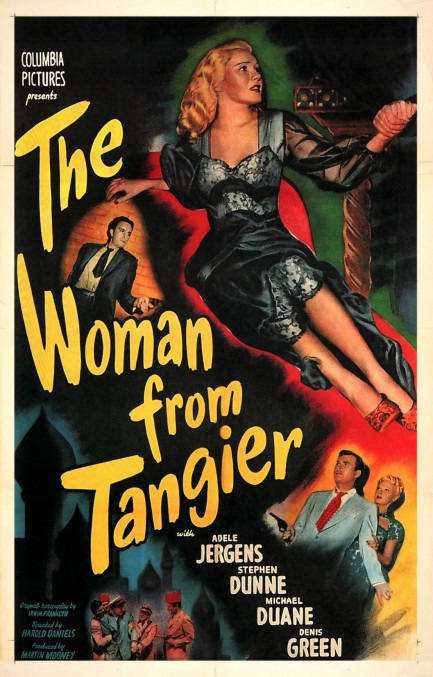
We have a strong affinity for Morocco after our adventures there a few years ago, so any movie that references that strange and wonderful country is one we must seek out. The Woman from Tangier, starring Adele Jergens, is basically another attempt to catch Casablanca lightning in a bottle. The story deals with a dancer in trouble with the law trying to flee from Morocco to Gibraltar, but being sidetracked when the ship she's sailing on has its safe robbed and its purser murdered. Detective work follows, conducted by insurance investigator and love interest Stephen Dunne. Together he and Jergens tackle the mystery. We were unable to locate a copy of this, but as always we'll keep at it. As a side note, we're fascinated by how outward looking Hollywood was during the 1940s. Though most of the productions never left Southern California, the action was set in dozens of countries. In the thriller/film noir category alone we've seen Gilda and Cornered (Argentina), The Shanghai Gesture, Bermuda Mystery, To Have and Have Not (Martinique), Temptation (Egypt), Sundown (Sénégal), Appointment in Honduras, and The Mask of Dimitrios (Turkey), not to mentions dozens of others set wholly or partly in France, England, Spain, and Mexico. The Woman from Tangier, then, was part of a well established trend. It premiered in the U.S. today in 1948.
 The first cut is the deepest. 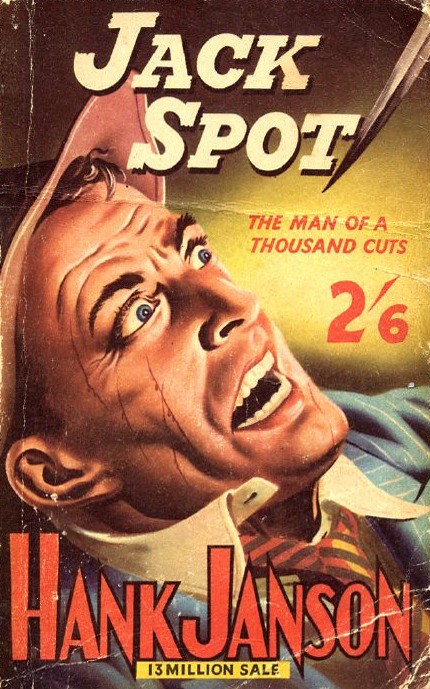 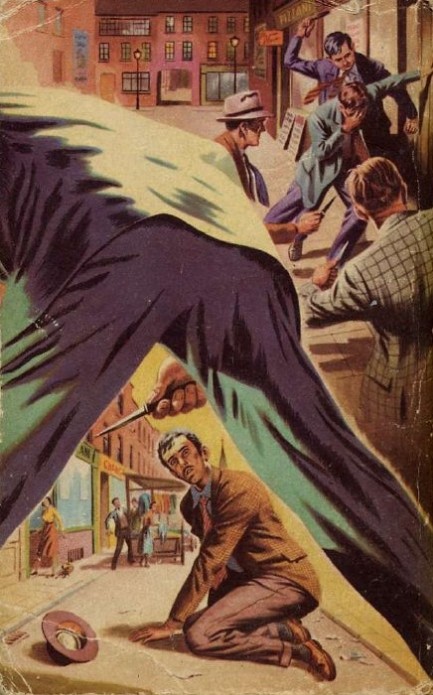
You see this cover for 1958’s Jack Spot—The Man of a Thousand Cuts around the internet quite a bit, especially on auction sites, because Hank Janson, aka Stephen D. Frances, is a very popular vintage author. But you don’t often see the back cover. Since we were talking about a spread-legged/phallic symbol motif yesterday, we thought we’d show you another example. The excellent art, which we found at a very interesting website here, is uncredited, so it seems. As far as content, the book is a biography of a notorious London gangster named Jack Comer, née Jacob Camacho, who as a youth became known as Jack Spot due to a mole on his cheek. Spot was quite a troublemaker, and used his knife-fighting skills and aptitude for vice to build and maintain a criminal empire that stretched from London to Tangier. Probably he deserves a heavier treatment on this website at some point, but we’ll see about that later. However, we can pretty much guarantee we’ll get back to Hank Janson, because he wrote numerous novels, and also created a character named Hank Janson who starred in some of the books, and, just for good measure, later stepped aside and let the pseudonym Hank Janson be inhabited by several other authors. Pretty convoluted, but it’s just the type of thing we love here.
 All I want for Christmas is my two front teeth.  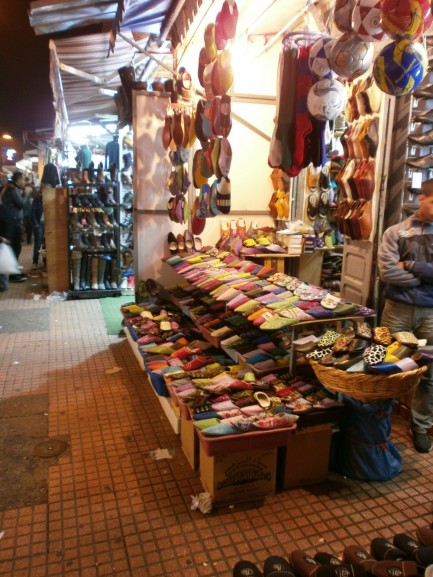 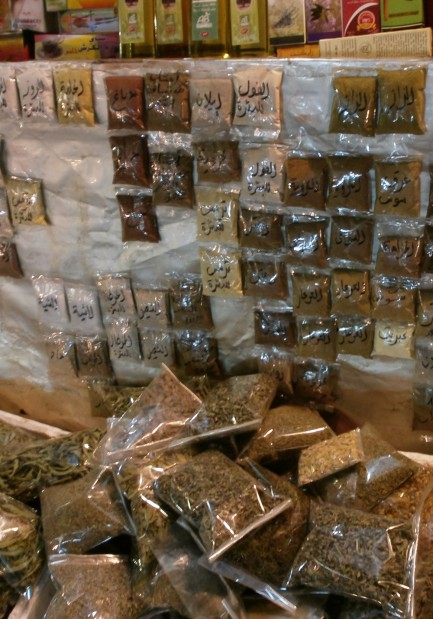
We’re back. Morocco did not produce any pulp, sadly. Some countries just don’t do it. During our drive through Tangier, Assilah, Rabat, Marrakech, and Fes we did find an abundance of printed matter in several languages, but we saw nothing with illustrated covers that was specifically Moroccan or Arabic in style. Interestingly, our little remark about hoping North Africa didn’t hit back almost came true when a Marrakech hustler, infuriated when we refused to pay him forty euros (accepted all over Morocco) for “guiding” us to a riad, stripped down to his underwear to show us his many knife fighting scars, then promised that if we saw him again he would kill us. Possibly we provoked this reaction a bit when we told him and his four henchmen that the only way he was getting that much money out of us was if he could take it from us (actually, I’ll drop the collective “we” at this point and say that it was I, PSGP, who did the challenging, and BB was not there). To make matters worse, I actually took all my money out of my pocket and laid it on the ground—three hundred euros. They did not get the money. I felt proud of backing down this crowd of extortionists, but strangely, when I told PI-1, her reaction was: “Are you crazy? I let you out of my sight for one week and you challenge some thug in an alley to a fistfight?” Darling, it was a knife fight. His promise was to stab me. What can I say? Shit happens. Anyway, above are a few shots of random Marrakech market stalls where we found no books, but plenty of other amazing items.
 It was a year to remember. 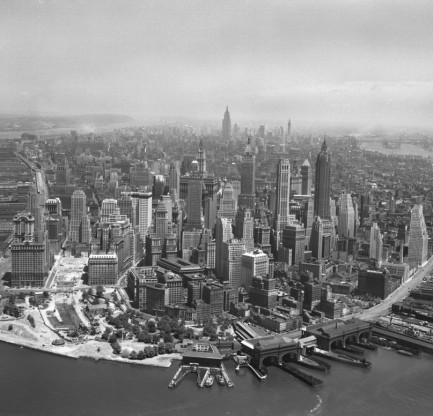
Above is a photo of Manhattan, New York City, in the year 1947, looking from Battery Park toward midtown. Here you see everything—the Staten Island Ferry Building at bottom, Wall Street to the right, the 59th Street Bridge crossing Welfare Island at upper right, and in the hazy distance, the Empire State Building—at that time arguably America’s most recognized symbol. In the aftermath of a war that had destroyed Europe’s and Japan’s industrial capacity, the U.S. was the unquestioned power on the planet, with massive economic might, a military that had taken up permanent residence in dozens of countries, and a growing stock of nuclear weapons. Two years later the Soviets would detonate their first nuclear bomb, shaking the American edifice to its foundation. Meanwhile, all around the world, the seeds of change were taking root. Below is a look at the world as it was in 1947. 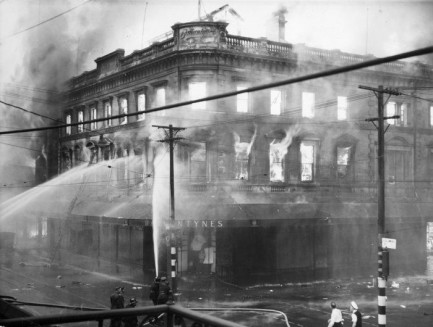 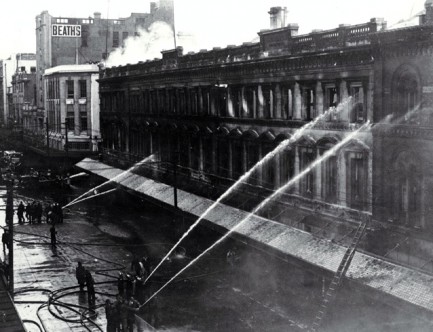
Firemen try to extinguish a blaze in Ballantyne’s Department Store in Christchurch, New Zealand. 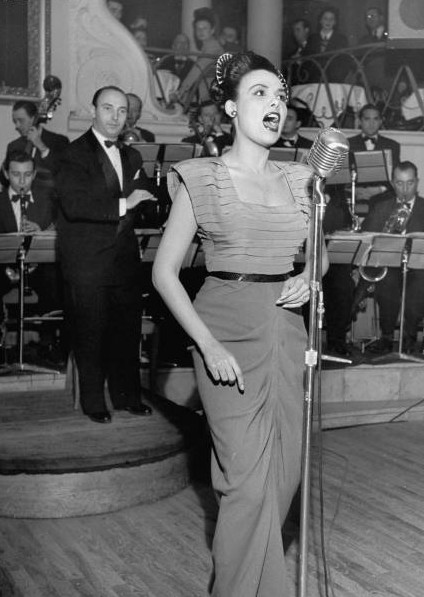
American singer Lena Horne performs in Paris. 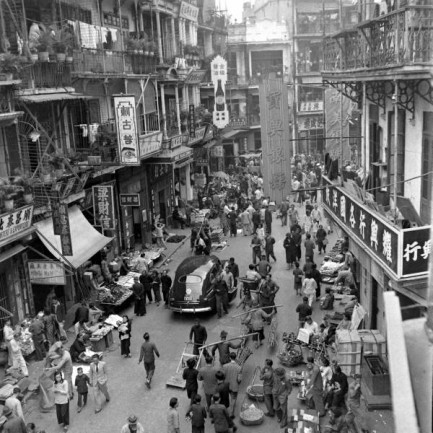 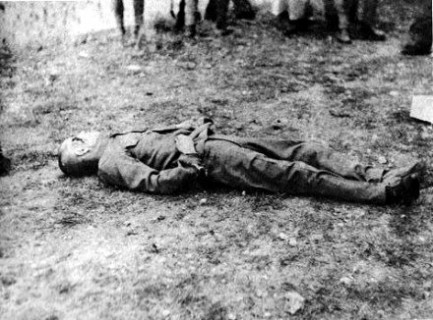
The hustle and bustle of Hong Kong, and the aftermath of the execution of Hisakazu Tanaka, who was the Japanese governor of occupied Hong Kong during World War II. 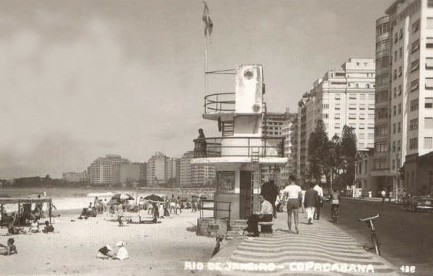 
Sunbathers enjoy Copacabana Beach in Rio de Janeiro, and a military procession rumbles along Rua Catumbi. 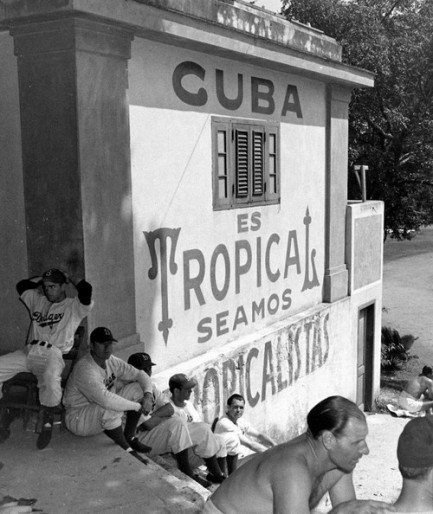 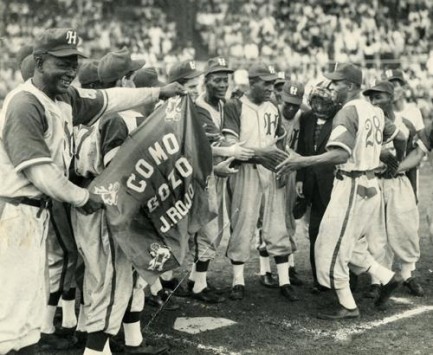
Assorted Brooklyn Dodgers and manager Leo Durocher (shirtless in the foreground) relax at Havana, Cuba’s Estadio La Tropical, where they were holding spring training that year. Second photo, Cuban players for the Habana Leones celebrate the first home run hit at Havana’s newly built Estadio Latinoamericano. 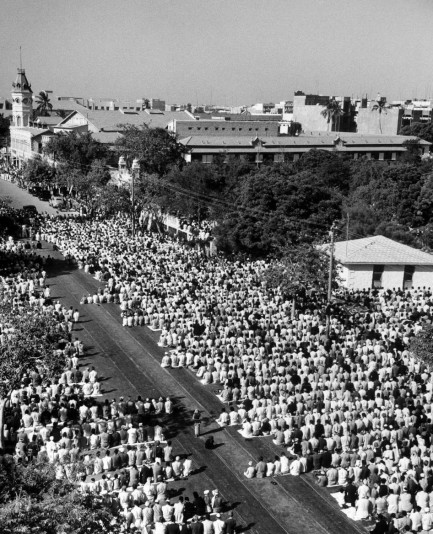
Thousands of Muslims kneel toward Mecca during prayer time in Karachi, Pakistan. 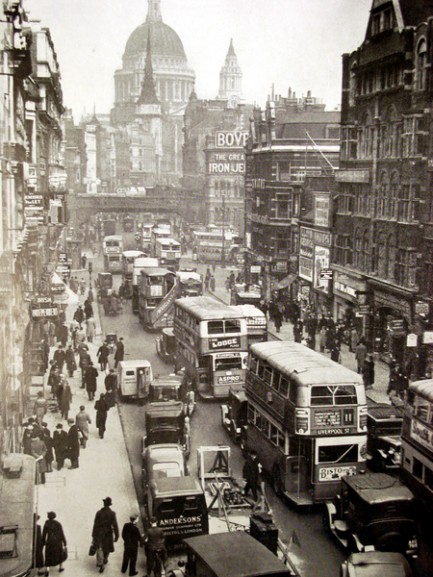
A snarl of traffic near St. Paul’s Cathedral in London. 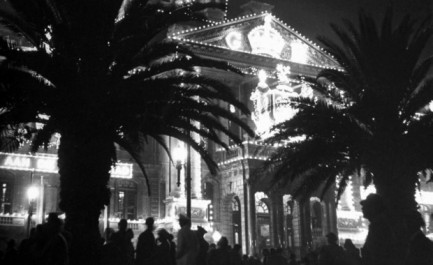 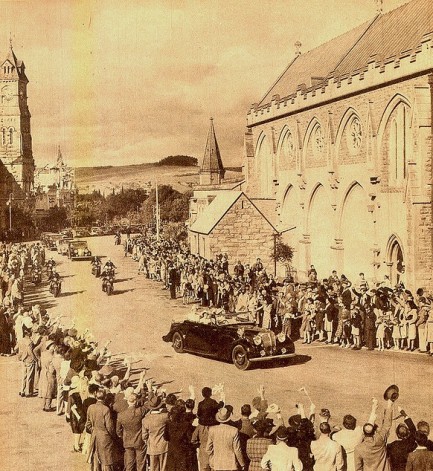
The city hall of Cape Town, South Africa is lit up to celebrate the visit of the British Royal Family. Second photo, during the same South African trip, the royals are welcomed to Grahamstown. 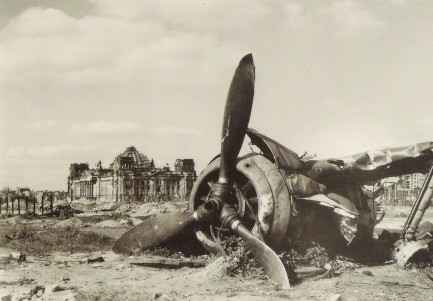 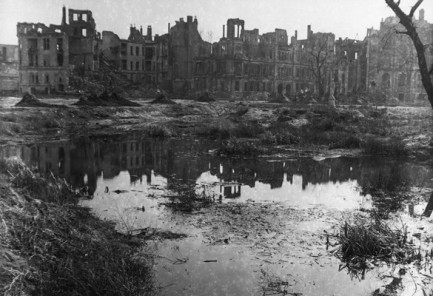
A wrecked fighter plane rusts in front of Berlin’s burned and abandoned parliament building, the Reichstag. Second photo, a shot of ruins in Berlin’s Tiergarten quarter, near Rousseau Island. 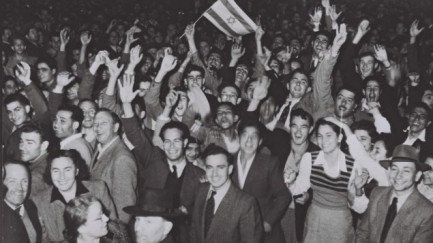
A crowd in Tel Aviv celebrates a United Nations vote in favor of partitioning Palestine. 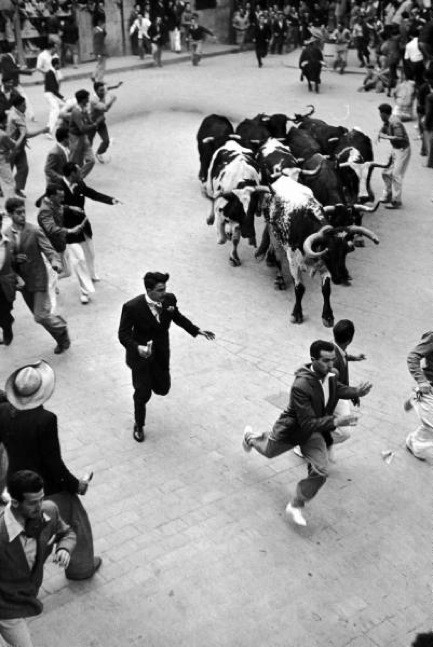
Men and bulls run through the streets of Pamplona, Spain during the yearly Festival of San Fermin. 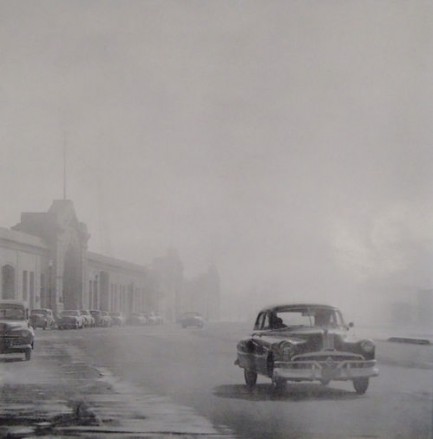 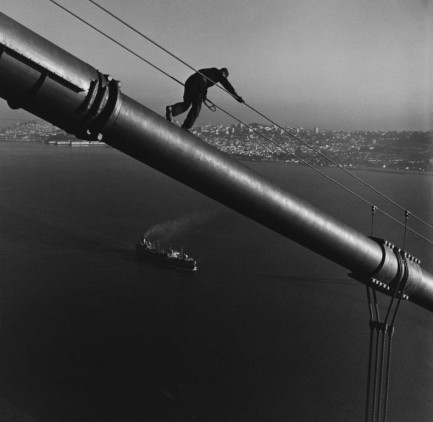
Fog rolls across the Embarcadero in San Francisco; a worker descends from a tower of the Golden Gate Bridge. 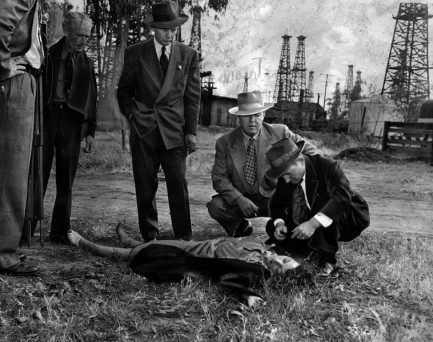 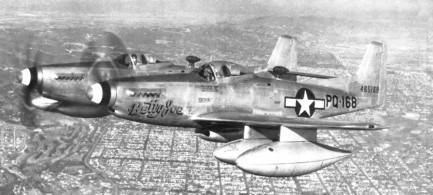
Detectives study the body of a woman found murdered in Long Beach, California. Two P-51 Mustang fighters fly above Los Angeles. 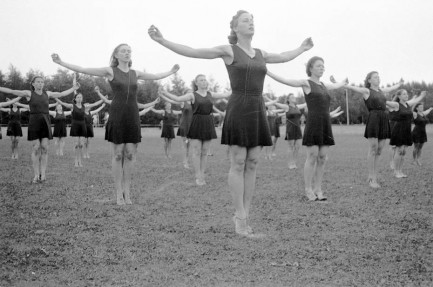
Danish women from Snoghøj Gymnastics School practice in Odense. 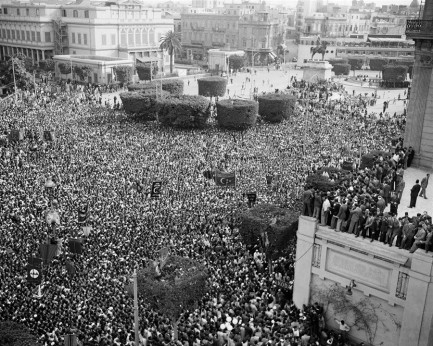
Tens of thousands of protesters in Cairo demonstrate against the United Nations vote in favor of partitioning Palestine. 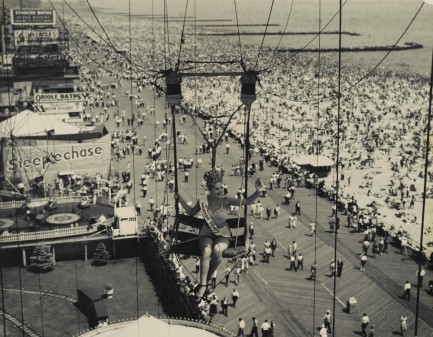
A beauty queen draped with a sash that reads “Modern 1947” is lifted high above the boardwalk in Coney Island, New York. 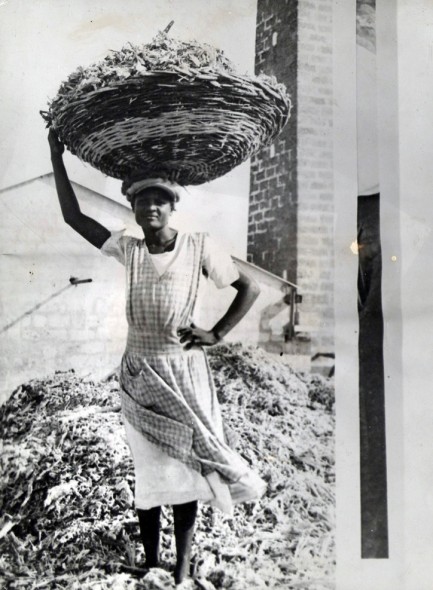
A woman in Barbados holds atop her head a basket filled with fibers meant for burning as fuel. 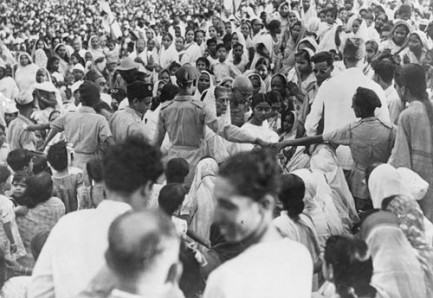
Mahatma Gandhi, his bald head barely visible at upper center, arrives through a large crowd for a prayer meeting on the Calcutta Maidan, India. 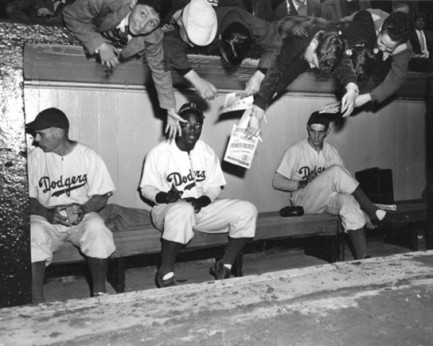
Major League Baseball player Jackie Robinson is hounded for autographs in the dugout during a Brooklyn Dodgers game.
|
 |

The headlines that mattered yesteryear.
1939—Batman Debuts
In Detective Comics #27, DC Comics publishes its second major superhero, Batman, who becomes one of the most popular comic book characters of all time, and then a popular camp television series starring Adam West, and lastly a multi-million dollar movie franchise starring Michael Keaton, then George Clooney, and finally Christian Bale. 1953—Crick and Watson Publish DNA Results
British scientists James D Watson and Francis Crick publish an article detailing their discovery of the existence and structure of deoxyribonucleic acid, or DNA, in Nature magazine. Their findings answer one of the oldest and most fundamental questions of biology, that of how living things reproduce themselves. 1967—First Space Program Casualty Occurs
Soviet cosmonaut Vladimir Komarov dies in Soyuz 1 when, during re-entry into Earth's atmosphere after more than ten successful orbits, the capsule's main parachute fails to deploy properly, and the backup chute becomes entangled in the first. The capsule's descent is slowed, but it still hits the ground at about 90 mph, at which point it bursts into flames. Komarov is the first human to die during a space mission. 1986—Otto Preminger Dies
Austro–Hungarian film director Otto Preminger, who directed such eternal classics as Laura, Anatomy of a Murder, Carmen Jones, The Man with the Golden Arm, and Stalag 17, and for his efforts earned a star on Hollywood's Walk of Fame, dies in New York City, aged 80, from cancer and Alzheimer's disease. 1998—James Earl Ray Dies
The convicted assassin of American civil rights leader Martin Luther King, Jr., petty criminal James Earl Ray, dies in prison of hepatitis aged 70, protesting his innocence as he had for decades. Members of the King family who supported Ray's fight to clear his name believed the U.S. Government had been involved in Dr. King's killing, but with Ray's death such questions became moot.
|

|
|

It's easy. We have an uploader that makes it a snap. Use it to submit your art, text, header, and subhead. Your post can be funny, serious, or anything in between, as long as it's vintage pulp. You'll get a byline and experience the fleeting pride of free authorship. We'll edit your post for typos, but the rest is up to you. Click here to give us your best shot.

|
|





























 and married her. As Gisela Winegard she maintained contact with Profumo after he entered politics, and he allegedly wrote letters to her on House of Commons stationery.
and married her. As Gisela Winegard she maintained contact with Profumo after he entered politics, and he allegedly wrote letters to her on House of Commons stationery.









































































































